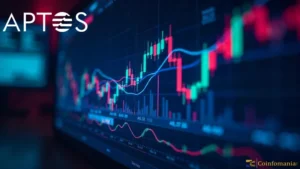DeFi Staking Evolution: Unlocking Complex Yield Strategies for Rewards

The Transformation of DeFi Staking: From Basic Rewards to Advanced Yield Strategies
Introduction to DeFi Staking Evolution
The decentralized finance (DeFi) landscape has undergone remarkable changes since its inception, particularly in how staking mechanisms have evolved. No longer limited to basic proof-of-stake (PoS) rewards, staking has developed into intricate yield-generating strategies that are reshaping user engagement with blockchain technology.
- Introduction to DeFi Staking Evolution
- The Rise of Liquid Staking
- Addressing Traditional Staking Limitations
- Liquid Staking: A Game Changer
- The Emergence of Restaking
- Enhancing Security and Revenue Opportunities
- Liquid Restaking Tokens: A New Frontier
- Institutional Interest in DeFi Staking
- A Shift in Perspective
- Aligning with Institutional Risk Management
- Navigating Risks and Challenges
- New Risks in a Complex Landscape
- Systemic Risks in DeFi
- Looking Ahead: The Future of Yield Generation
- A Paradigm Shift in Financial Services
- Cross-Chain Restaking and Integration with Traditional Finance
- Conclusion: Embracing the New DeFi Landscape
The Rise of Liquid Staking
Addressing Traditional Staking Limitations
Traditional staking has long posed challenges for users, primarily due to the requirement of locking tokens to secure the network and earn rewards. This lack of liquidity has deterred many potential investors who prefer the flexibility to utilize their assets in various DeFi applications.
Liquid Staking: A Game Changer
Liquid staking emerged as a solution to this liquidity issue, allowing users to stake their tokens while receiving liquid derivatives that represent their stake. These liquid staking tokens (LSTs) can be traded freely, used as collateral, or leveraged in other DeFi protocols, effectively eliminating the liquidity penalty associated with traditional staking.
The Emergence of Restaking
Enhancing Security and Revenue Opportunities
Building on the success of liquid staking, restaking has introduced a new layer of efficiency. This process allows users to enhance the security of their staked assets while simultaneously earning rewards from multiple blockchain services. EigenLayer is a notable player in this space, offering a paradigm shift in blockchain security by enabling shared staking across various protocols.
Liquid Restaking Tokens: A New Frontier
Liquid restaking tokens (LRTs) further enhance this ecosystem by providing liquidity for restaked positions, similar to how LSTs function for traditional staking. This creates a compound effect, allowing users to earn rewards from a single source while maintaining the flexibility to engage in other DeFi activities.
Institutional Interest in DeFi Staking
A Shift in Perspective
The growing interest from institutional investors in DeFi staking mechanisms marks a significant development in 2025. As regulatory frameworks become clearer and infrastructure matures, traditional financial institutions are beginning to view DeFi not merely as a speculative venture but as a viable source of yield.
Aligning with Institutional Risk Management
Liquid staking and restaking protocols offer multiple income streams while allowing for asset mobility, aligning well with institutional risk management practices. This adaptability is increasingly appealing to traditional finance entities looking to diversify their investment portfolios.
Navigating Risks and Challenges
New Risks in a Complex Landscape
While the advancements in staking strategies present exciting opportunities, they also introduce new risks. The complexity of smart contracts and the interconnectedness of liquid staking, restaking, and liquid restaking can lead to potential failures. Additionally, the risks associated with slashing—penalties imposed for validator misconduct—can compound across multiple networks.
Systemic Risks in DeFi
As capital flows into interconnected staking protocols, the potential for systemic risk increases. A significant issue with a major liquid staking provider could have far-reaching consequences for the entire DeFi ecosystem.
Looking Ahead: The Future of Yield Generation
A Paradigm Shift in Financial Services
The evolution of DeFi staking signifies the beginning of a transformative era in how blockchain networks are secured and rewarded. The concept of yield generation—earning from multiple sources on a single asset—is becoming increasingly sophisticated.
Cross-Chain Restaking and Integration with Traditional Finance
Future advancements may include cross-chain restaking, allowing staked assets on one blockchain to secure services on another. This would enhance the efficiency of multi-chain ecosystems and provide users with diverse revenue opportunities. Furthermore, as traditional finance continues to integrate with DeFi mechanisms, new financial instruments could emerge, offering DeFi rates to conventional investment portfolios.
Conclusion: Embracing the New DeFi Landscape
The transition from simple staking to complex yield-generation strategies represents a significant technological evolution in capital efficiency and blockchain security. By eliminating the trade-offs that previously hindered participation, liquid staking and restaking protocols are unlocking new avenues for both individual and institutional investors. As these mechanisms mature, they are poised to play a crucial role in the ongoing transformation of the financial system, offering multiple income streams while maintaining liquidity. Understanding the associated risks and rewards will be essential for participants looking to navigate this new paradigm effectively.







